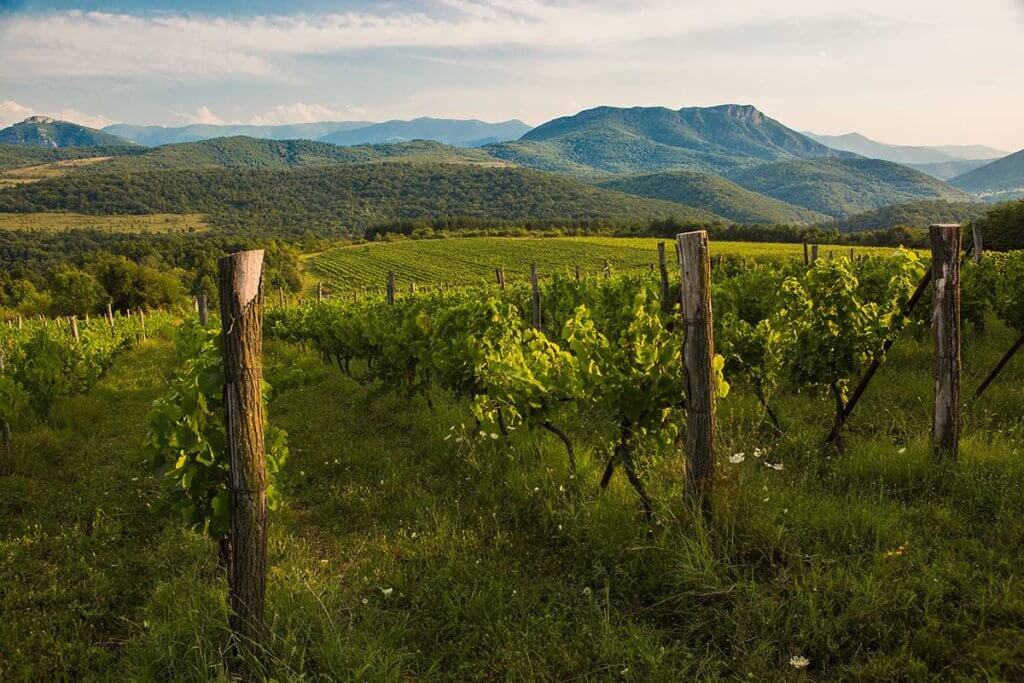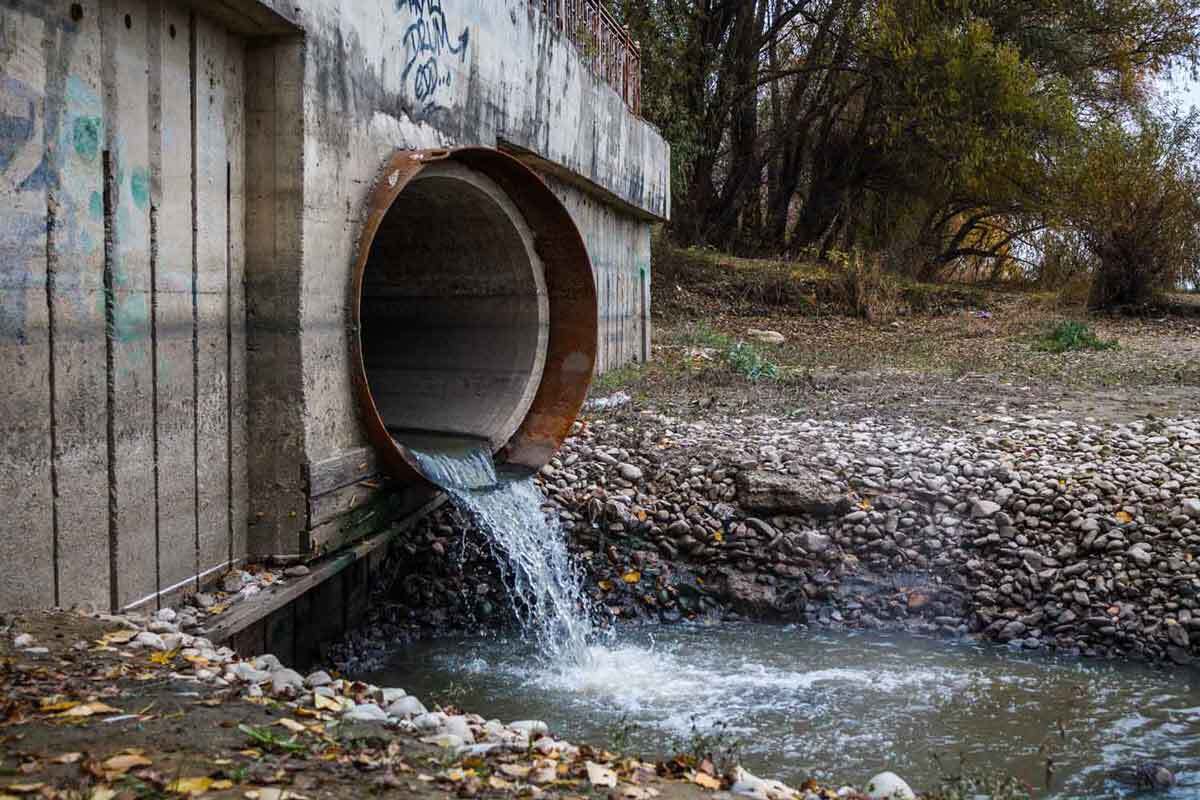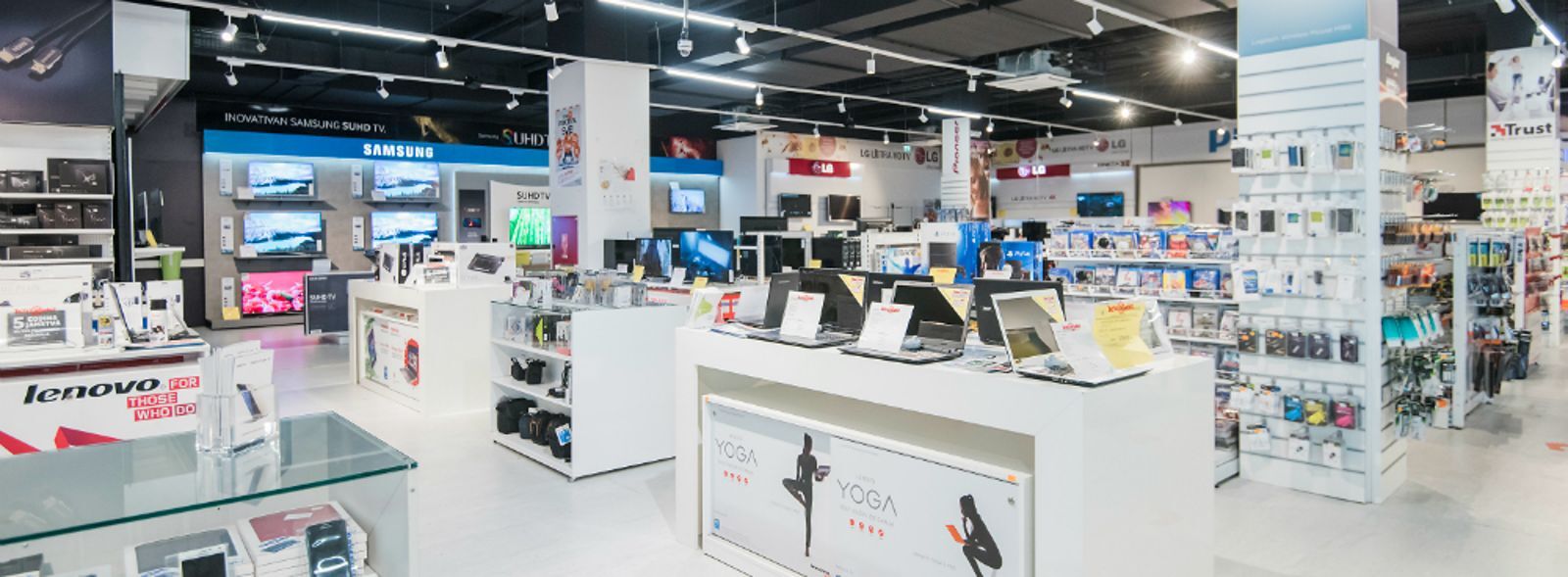Water is the basis of life and a priceless natural resource. Less than 1% of all water on Earth is fit for consumption. Each one of us can contribute to its preservation by using it wisely. According to the UN, more than 1 million people on the planet do not have access to clean drinking water.
- If the tap runs unnecessarily, about 8-9 liters are poured into the canal in just one minute. Do not let water run unnecessarily while brushing your teeth or shaving.
- Make sure the faucet is not dripping. Ten or more liters of water per day flow from a dripping faucet. A dripping faucet can be repaired by replacing its seal.
- About 1/3 of daily clean water consumption goes to the toilet. To save water, you can install cisterns with two operational modes.
- Soak the dishes before washing them.
- Taking a shower instead of a bath saves about 1,500 liters of drinking water per week.
- When you take a shower, you use about 100 liters of water. To reduce this consumption by about a third you can install a special economical shower head.
Good advice
Listen – a leak is not always visible, but in some water leakage cases, the leak is clearly audible. If you wonder what water pro’s do to find water leaks – they listen.
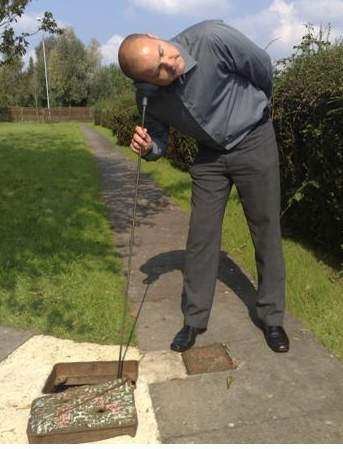
Take an “anti-leak” test. Track consumption: record water meter values in the evening and then in the morning. Compare them. If there is a change, then there is a leak. Caution – do not run the washing machine, dishwasher, or any other utility that may affect water consumption at night.
Or if you believe that going to record water readings twice per day is too old fashion in the modern IoT and smart water times – get an IoT data logger and start monitoring and profile your consumption.
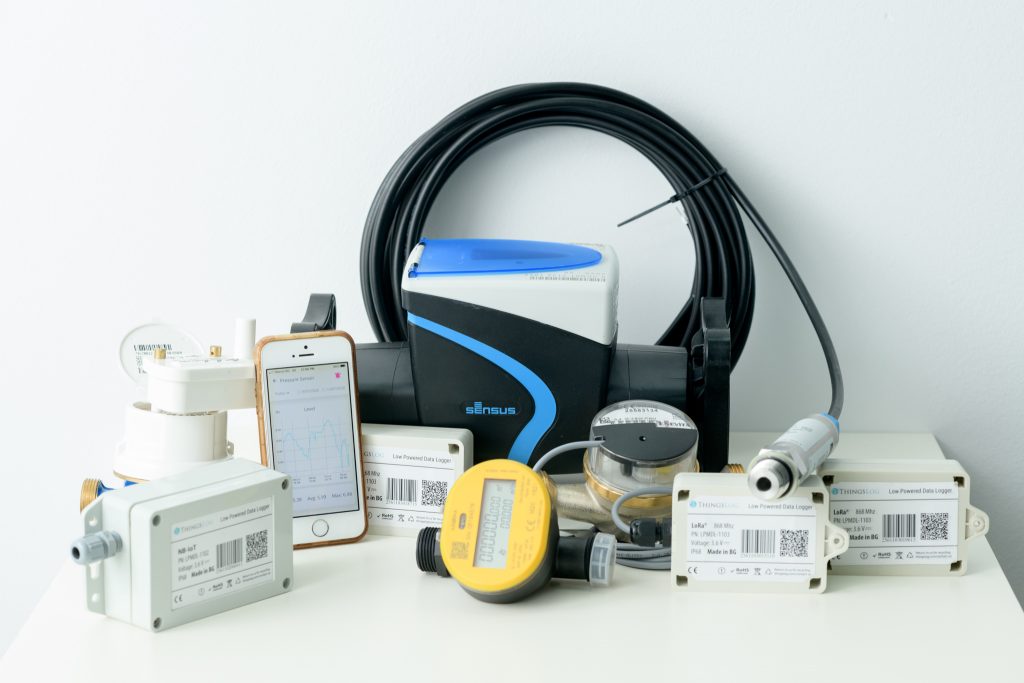
The water meter may freeze. To avoid this, we can wrap it with insulating material and nylon on top. Or seek the advice of the collector – he or she can offer you a better solution for insulation, tailored to your local climatic conditions.
Or simply buy a smart water meter with leakage or low-temperature alarms build in.
Leaky toilets
Studies show that dripping faucets and leaking toilets account for 5% of home water consumption. Leaks are wasteful and expensive. Any unused drop that leaks through the canal are going to be a part of your water bill. If the water is warm, then you are playing for energy as well. Additionally, if the water has a high natural mineral content, leaks change the color of the sinks, leaving ugly red or brown stains that are difficult to clean, which may even force one to change their sink. Fortunately, most of the leaks are easily detectable. The point is to find time to fix them.
The biggest source of water leaks at home is the toilet. Some studies show that 20 percent of home toilets are leaky. The easiest way to check for such a leak is to pour a few drops of a dark-colored liquid (such as egg pain) into the toilet cistern. If the toilet bowl water is colored 15 minutes later, provided that no one has used the toilet in the meantime, is proof of a leak. Plumbing and home appliance stores sell replacement kits. The kit will pay for itself over the next few months through the reduced water bill. Look for a set with clear instructions.
Most toilet leaks are caused by a faulty valve. It is located in a water tank and is usually made of rubber. Replacing a damaged valve only takes 5 minutes.
Usually, toilets installed before 1980 use 15-20 liters of water for flushing.
WE RECOMMEND
Small toilets
This type of toilet requires only 6 liters of water. Because small toilets reduce water bills, you will find that such appliances can pay for themselves quickly.
New toilet seats are similar to old ones, but with one important exception – the water tank above the toilet bowl is often smaller, and the plate itself usually holds less water. This type of toilet allows efficient use of water by gravity or pressure. They are quiet and often use steep-walled plates to speed up the water and push the waste down the drain. A small drawback is a need for frequent cleaning with a brush to remove stains.
Faucets and mixers
The first step in
repairing a dripping faucet is to turn off the water tap at the water meter
before the faucet runs. Most leaks are stopped by replacing the rubber ring
inside the battery. It is usually located at the base of the battery. It’s
easy!
Our Recommendation
Use mixer taps with ceramic seal – they have a longer life and offer a more secure seal.
BATHING
One of the easiest ways to save water is to take a shower instead of a bath. For a typical bath, 80-100 liters of water are used. As for a shower, most people actually use less than 50-60 liters.
WE RECOMMEND
Low jet shower
Installing a new,
efficient shower is another great way to save water at home. It is cheap and
easy – and pays itself off in less than 2 months. To find out if it makes sense
to replace an existing shower, perform a simple test:
Run the water from a normal pressure shower and keep an empty 4-liter container in the shower. Note how long it takes for it to be filled with water. If it takes 20 seconds or less, then you have a shower that uses at least 12 liters per minute. Showers of this type are the main candidates for replacement. Showers designed to save water will take about 24 seconds to fill the 4-liter container. This means that the jet is less than 10 liters per minute.
The most modern showers – that offer precisely controlled temperature – are usually low-jet showers. They are designed so that the jet feels like a stream of water, not a stream of needles.
There are two main types of showers. Some people prefer mobile showers that are attached to the plumbing with a flexible connection. They can also be hung in a certain place on the wall. But mobile showers are most comfortable and effective when you move them around the body because you direct the water where it is most needed; whether you wash the rest of the soap or concentrate a certain amount of warm water on sore muscles. Showers use less hot water when they are in your hand. This is because the water has to travel less distance before reaching your body. With ordinary fixed showers, the hot water must first travel some distance, possibly through the cold air, before it reaches your body. This cools the water and forces the bather to turn on the hot tap. The installation of a low-jet shower takes less than 10 minutes.
Aerator taps. If you can take a shower with less than 10 liters per minute, why use more than 25 liters just to wash your hands in the sink? Aerator taps are cheap and can reduce internal water consumption, which means they will pay for themselves quickly.
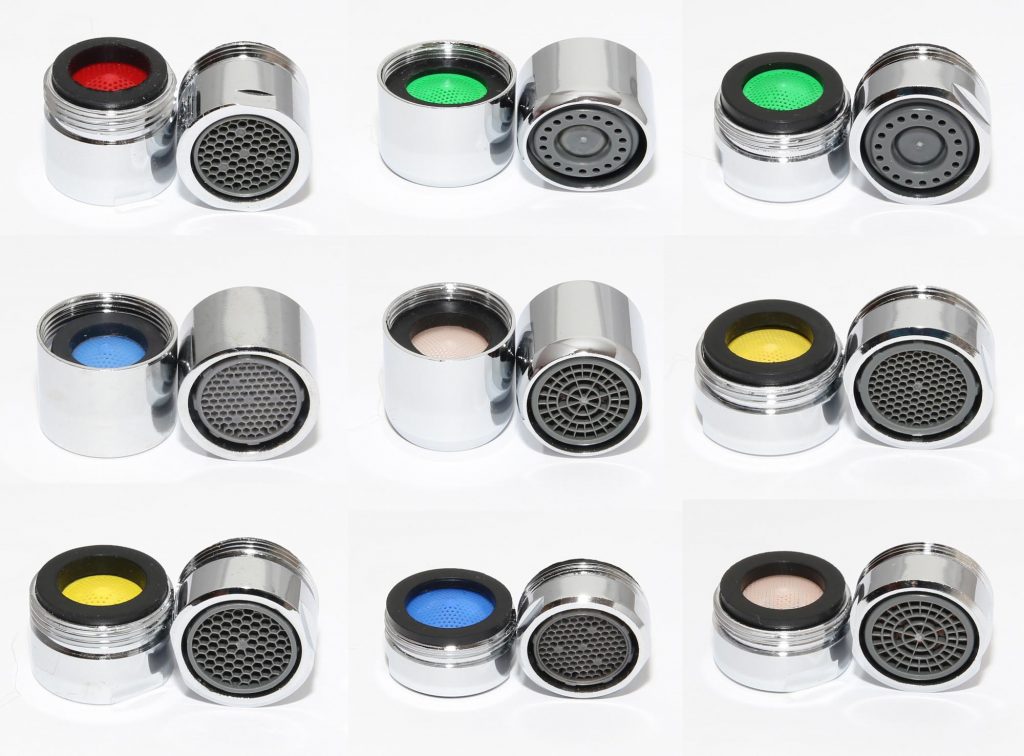
The aerators restrict the flow from the tap. Most are made out of a thin metal grille that is wrapped around the end of the battery. They are so small that most people don’t even notice them. In fact, plumbing and hardware stores sell low-flow aerator taps. Before you buy them, develop your existing aerator, study it to make sure you are looking for the right type and size in the store.
Most people want to have a strong jet in their kitchen faucets so they can easily and quickly fill their pots when cooking. An aerator that leaks 10 liters per minute is suitable. In the bathroom, an aerator that leaks 4-5 liters per minute will provide enough water to brush your teeth, hands, or fill a glass of water.
Insulation of hot water pipes will save your water and energy loss. This is an easy home repair that costs little. Most plumbing and hardware stores sell pipe insulation that exactly matches standard plumbing pipes. The most important section of the insulation pipe is the first few feet at the inlet and outlet of the heater. Insulating hot water pipes will reduce heat loss during the transition between the header and the tap. When you need to replace your heater, contact a plumber to install fittings on the pipes – check valves for hot and cold water. Most households would save the money they spent in less than a year.
Did you know that?
Water heated above 60 degrees Celsius tends to form carbonate deposits.
WE RECOMMEND adjusting the thermostats of the appliances to 55 degrees Celsius. The installation of circulating pumps in the substation supplies hot water instantly when using the tap and on upper floors. No water loss from draining!
WASHING AND DISHWASHING MACHINES
The best dishwashers offer different cycles. When the dishes are a little dirty, set to “light washing”, which requires less water and energy. The easiest way to save water in a dishwasher is to let it do all the work. You rarely have to rinse the dishes before putting them in the dishwasher; modern dishwashers do an extremely good job of cleaning dishes – even pots and pans. Also, why double your work by washing the dishes by hand and then with a machine?
It makes sense to buy a washing machine with a hatch that opens at the front, not the top. Front hatch machines use up to 33% less water than those with a top hatch, and you get your clothes just as clean. In addition, the advantage is that the horizontal top can be used. Another feature of the washing machine, that saves water, is the control of the variable water level. This allows you to reduce water use when you have little laundry. And yet, it is important to remember that washing machines use water and are energy efficient when they are full; if you can wait until you have enough dirty clothes to run it full instead of with a partial load.
YARD AND GARDEN
How to save water, money, and hard work while still having a well-kept yard.
- Do not use drinking water for irrigation! A well or collecting rainwater will solve your problem.
- Water the grass, flowers and vegetables abundantly twice a week, not a little every day. Water in the morning or evening to limit water evaporation.
- Cover the planted areas with grass or straw to reduce evaporation.
- Landscaping the outdoor area with grass, flowers, trees, shrubs and vegetable gardens offers the greatest opportunity to save water. This is because most people water their garden with much more water than they need. Some experts believe that 85% of the problems in green areas are caused by too much wasting of water.
WE RECOMMEND
Water before 9 am or after 6 pm
If you water your lawn throughout the hotter hours of the day, you will lose 30% of the water due to evaporation. However, if you wait for the hotter hours to pass, the water will seep into the soil and help the roots develop. It is best to water early in the morning to prevent the appearance of mold. But in waterless areas, where humidity and mold are not serious problems, watering in the evening can be a great way to keep your lawn healthy. In addition, you can avoid evaporation losses if you refrain from watering on a windy day.
Alway monitor your garden irrigation system – Home or business facility irrigation systems are typically always leaky. Don’t be surprised that if you put monitoring and start capturing them you will see a big difference in your water bill.
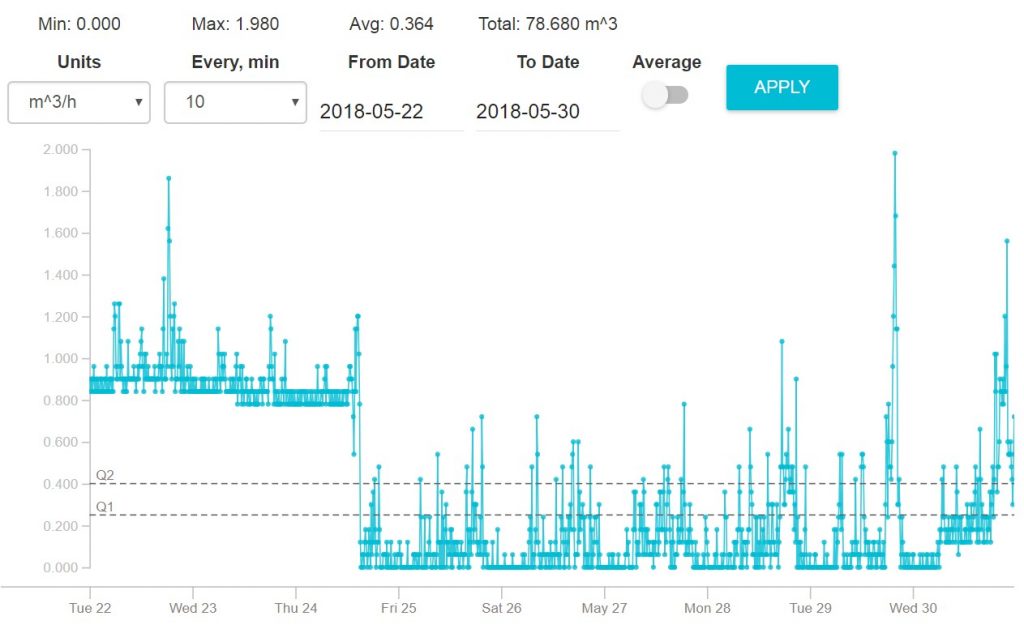
In the example above you see a huge water leak on the left.
A few short waterings are better than a long one
Most lawn sprinklers deliver water faster than it can be absorbed. Our advice is – water your lawn three times for ten minutes at a half-hour interval. This is equivalent to 30 minutes of continuous watering but is gentle on the plants.
Water only when necessary
The easiest way to find out if your lawn needs water is to talk about it. If there are traces of footprints on it, then it’s time for irrigation. Otherwise, wait a day. Caution: constant watering promotes the growth of shallow roots, which will dry out the lawn on hot days.
Fertilize
Pines from pine bark or straw save water and have a decorative character when spread between trees, shrubs, and other plants. They retain moisture under themselves, providing plants with long-lasting moisture. Over time, they decompose and become a rich source of nutrients, and also interfere with the growth of weeds to your plants. Before planting anything, the soil should be turned and aerated to help the roots grow easily. Fertilizer is a key element. In some places, well-fertilized soil requires only 70% of the water that unfertilized soil needs.
Allow the grass to grow longer
Higher grass needs less water. Allowing it to grow to a height of 12-15 cm, will protect the grassroots from the hot midday sun and prevent evaporation.
Arrangement of the garden
You can save water by creative landscaping of the yard, which requires less maintenance, lower water bills, but gives a picturesque decorative look.
Divide your yard into several zones
Have some zones with grass, moisture-loving plants that require constant watering, dry-loving plants that need less water, and areas that do not need watering at all. Dividing the plants according to the amount of water they need makes maintenance much easier. Reducing water consumption is the only benefit. Do not plant grass in long narrow sections. It is impossible to spray such areas so that the water is directed only towards the grass, especially if the grass is near a path or street, which gets hot during the day and thus accelerates the evaporation of water.
Look for dry-loving plants in landscaping stores
Find out what type of landscape suits your lifestyle.
Drip irrigation
The most effective way to use water in the yard and keeping the plants healthy is through drip irrigation. Built as a carefully planned network of hidden pipes and hoses, providing a slow flow of water to the root system of the garden. Most traditional sprinkler systems supply tens of liters of water per minute, while drip irrigation reduces the flow many times over. Most drop systems are constructed with special soft pipes and flexible connections. The pipes, which are usually up to 1 inch in diameter, are buried just below the ground. The small flexible connections bring the water to the surface.
Water reuse
It’s about the water that drains from the sinks, washing machines, bathtubs, showers. The idea is to reuse water for purposes where the purity requirements are not as high, such as for irrigating backyards or flushing toilets.
AT HOME
- Use mixer taps with ceramic seal – they have a longer life and offer a stronger seal. The installation of circulating pumps in the substation supplies hot water instantly when using the tap and on upper floors. No water loss from draining!
- Since heating water also requires energy, saving hot water achieves a double effect – saving water and energy.
- The installation of a mixer with a thermostat will help you quickly reach the desired temperature and at the same time save water and energy (up to 18 liters per shower).
- Save more than half of the water you draw from the tap by installing spray taps – they contain small holes that disperse the water in the form of a spray, similar to a mist, but still allow normal hand washing. Their installation is recommended for new buildings or completely restored old ones, as it requires complete replacement of ordinary pipes. One third of the water a person uses per day is for the toilet. By using recycled water – wastewater from sinks, bathtubs, showers (but not from the toilet), you can save 50 liters from the siphon.
IN THE KITCHEN
- Clean the dishes before washing them
- Avoid soaking the dishes under running water
- Collect and soak all dishes in the sink and wash them at once. When washing dishes under running water, 50% of the water is lost.
- When washing fruits and vegetables, place a stopper on the sink instead of running water constantly.
- Do not drain drinking water to cool it. A bottle of drinking water in the refrigerator will satisfy this need.
- You do not need to use running water to cool drinks and fruit. Put them in the fridge instead.
- Let the time work for you – soak pots and pans – it will save you effort, detergent and money.
WHEN WORKING WITH WASHING MACHINES AND DISHWASHERS
- Use the full capacity of the washing machine and dishwasher by loading them with the maximum allowable amount.
- Choose the shortest program that is needed to clean clothes and dishes.
- In case of laundry, soaking can be applied, as after the water enters the machine it is switched off and the laundry is left to stand for 1-2 hours or all night and then the program is continued. This saves water, electricity and washing powder.
- When buying a washing machine and dishwasher, pay attention to the instructions for energy and water consumption. For one cycle, the washing machine consumes an average of 65 liters, and the dishwasher – 25 liters.
- Before putting the dishes in the dishwasher, clean them from the food, but without rinsing them – the dishwasher will take care of that.
- Liquid detergents are much safer for the environment due to the reduced salt content in them.
IN THE BATHROOM AND TOILET
- More than three-quarters of the water used in the household comes from the bathroom. Here, the most significant reduction in water costs can be made.
- Give preference to a shower over a bathtub – half of the water needed for the bathtub is used when showering.
- Showers that distribute the jet evenly allow you to take a bath with less water consumption.
- Installing water-saving toilet cisterns reduces water consumption. Put a plastic bag or plastic bottle full of water in the toilet cistern – this way it will work with less water consumption.
- Save 10 liters of water by turning off the tap while shaving.
- Do not let the water run while brushing your teeth – you will save 5 liters.
OUT OF HOME
- Use a bucket of soapy water to wash the car and turn on the hose only when rinsing. The use of drinking water for this purpose is wasteful. Instead, use rainwater collected in a barrel under the gutter or natural water sources outside the city.
- Use a broom instead of a hose to clean leaves and dust.
- Wash the terraces in rainy weather.
IN THE GARDEN
- It is forbidden to use drinking water for irrigation – a well or collected rainwater can solve this problem.
- Avoid watering when it is windy or at noon to avoid evaporation. Water early in the morning or later in the evening.
- Slower and less frequent irrigation promotes deeper root growth and strengthens plants. Additionally, moisture penetrates deeper into the soil.
- Cover the planted areas with straw and leaves to reduce evaporation.
- When using a sprayer, position it so that the water falls only on the garden area. Do not leave the appliance running all day or when you are away.
Finally
If you are not sure what is the effect of your water-saving actions – get ThingsLog and start to monitor and profile your consumption. Learn how you can detect leaks, abnormal consumption, or theft of water from your mobile phone.


